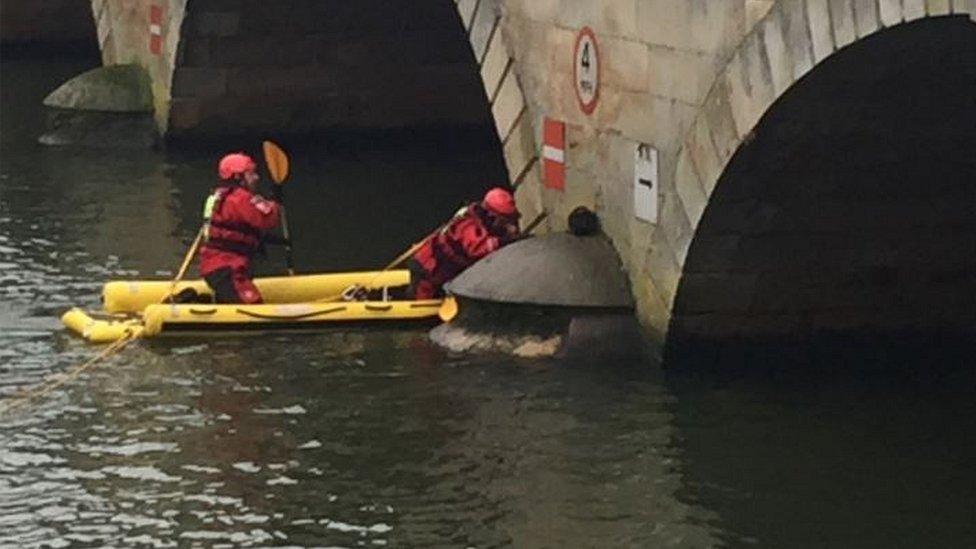New Zealand goose: How one blind bisexual bird became an icon
- Published

Thomas (pictured) spent most of his life together with a male swan by the name of Henry
A memorial is being held for a New Zealander who spent most of his life as a loving partner, caring father and an icon of the LGBT community.
Thomas the goose died 6 February at almost 40 years old and is being buried beside his partner on Saturday.
"Thomas has been such an iconic and well-loved bird," said Craig Shepherd, who runs the Wellington Bird Rehabilitation Trust where Thomas spent his last years. "It's lovely that he is going to be buried where he spent most of his life."
But how exactly did a goose end up an icon?
A love triangle
It all started around 1990 when a black swan named Henrietta flew in to the Waimanu lagoon, located in a small town on New Zealand's Kapiti Coast.
Due to a damaged wing, she was unable to fly with the other swans and was often alone until a few years later when a white goose named Thomas arrived. The duo quickly formed a bond and Thomas was very protective of Henrietta, even scaring off any humans or dogs that came near her.
But after 18 blissful years together, a new young female swan entered the equation and was often spotted with Henrietta. No one thought much of it, assuming that they were both females.
The shocker came when the new swan laid an egg. It turned out that Henrietta was in fact a male swan who had mated with the new female swan.
"It's very hard to establish the gender of mature black swans," said Michael Peryer, the tour guide at the Waikanae Estuary where the lagoon is located. "So it turned out in fact that Thomas and Henrietta - who was really a Henry - had 18 happy gay years together."
Henrietta was re-named Henry, and the new young swan was given the name Henrietta.
Naturally, Thomas the goose was not too pleased that someone had stolen his mate.
"He got really aggressive and started beating the swans up. But once their eggs hatched he changed completely and took to those babies like they were his own," said Mr Peryer.
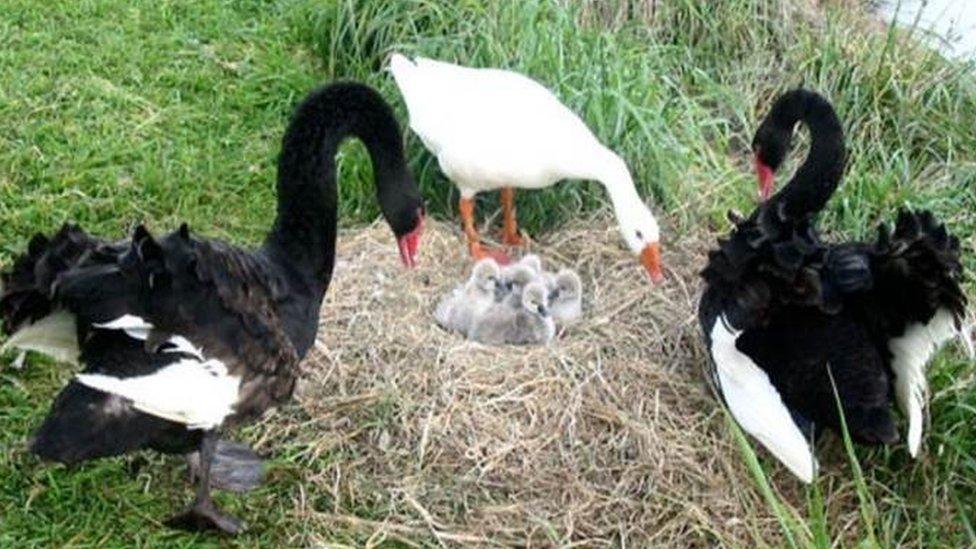
Thomas (white goose) often took care of Henry and Henrietta's cygnets
Henry and Henrietta went on to have 68 cygnets over the next six years.
Thomas decided to stick around with the duo where he played the role of a doting uncle, helping raise the swans, teaching them how to fly and taking care of them when their parents did not.
"It's so unusual to have two different species combining so intimately to raise a species," added Mr Peryer.
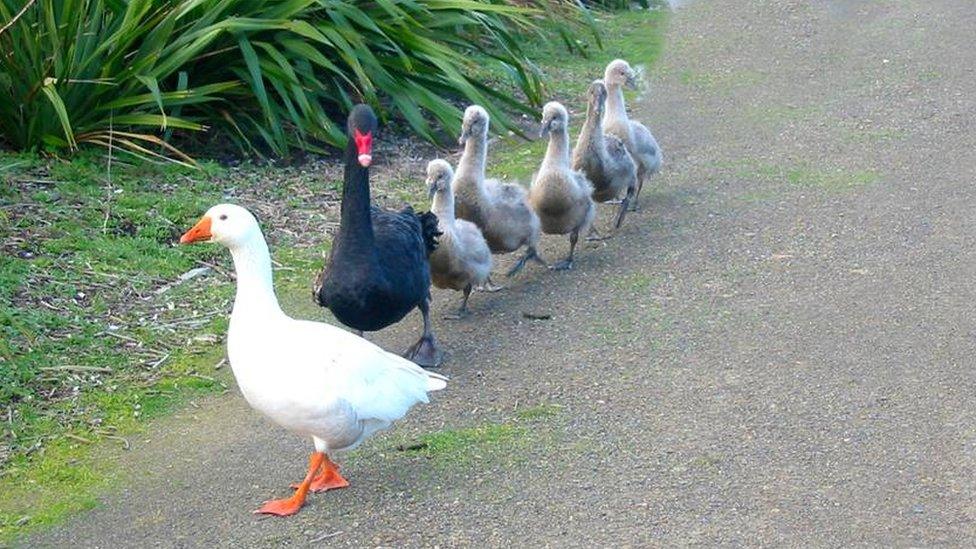
Thomas took up the role of teaching the cygnets how to fly
In 2009, Henry the black swan died due to old age. It wasn't long before Henrietta flew off with another bird and Thomas was left alone.
After a while, Thomas went on to meet a female goose in the estuary, and for the first time - he had 10 babies of his own.
However, his stint as a father was short-lived, as he had his babies stolen by another goose who raised the babies himself.
Thomas' eyesight soon began to fail him, becoming blind first in one eye and eventually both. He was in 2013 finally relocated to the Wellington Bird Rehabilitation Trust, where he spent the final years of his life.
"He died when he was almost 40 years old, that's pretty ancient. In human years he would be around 80 years old," said Mr Peryer.
According to Mr Peryer, it is not uncommon for geese to be bisexual, though he adds that the duo were the only pair in the Waikanae Estuary to mate with the same sex.
It is also not unheard of for geese to mate with swans, with the offspring of a swan and a goose known as a swoose.
Tributes and tears
Thomas, a well-known figure at the estuary, was often visited by tourists who marvelled at how he would follow Henry and Henrietta around.
When news of his death spread, tributes from visitors from as far as Canada and the Netherlands poured in.
"I loved him so much. Many fond memories feeding him his sweet corn every evening," said one user on Facebook.
"Thomas, I remember meeting you and how amazing you were. Big hugs," another commented.
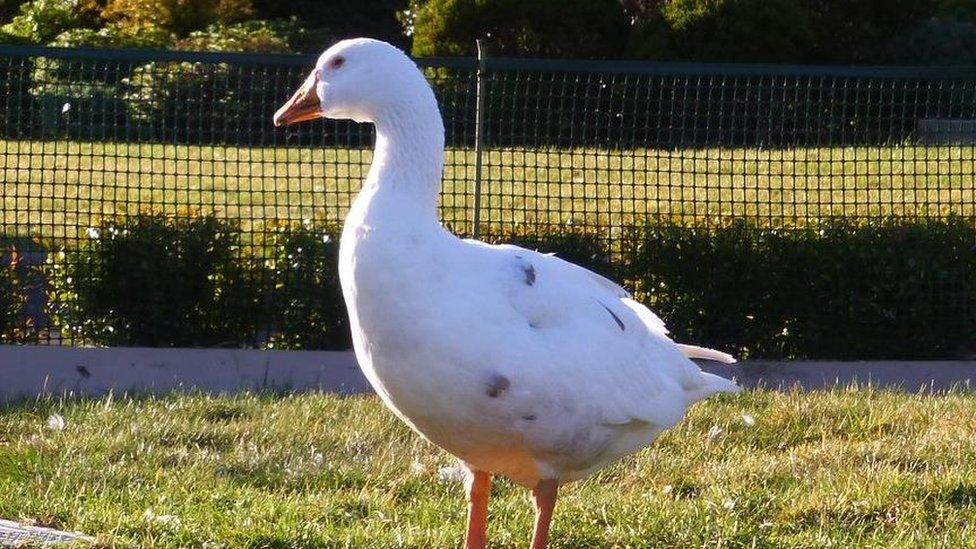
Thomas developed cataracts in his old age
Thomas' memorial on Saturday will see him buried next to Henry the swan.
The event will be marked with a plaque in tribute to Thomas life, with an epitaph by New Zealand performer Pinky Agnew to be inscribed on his tombstone:
Here lies Thomas, the great-hearted goose,
Nestled near Henry, in their final roost,
Here where they raised young, and found sanctuary,
Somewhere above us, these great souls fly free.
- Published2 February 2018

- Published13 February 2018
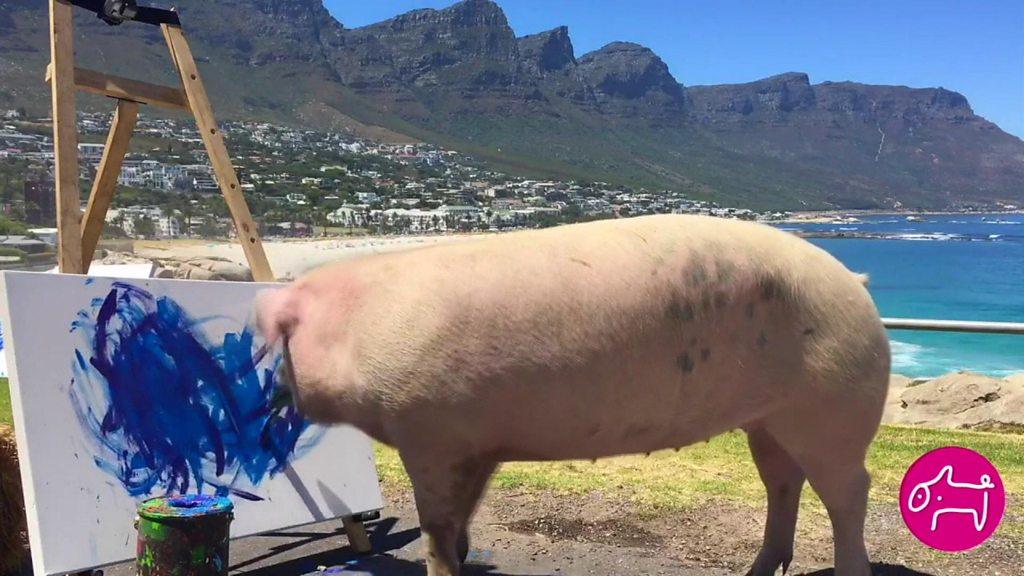
- Published15 February 2018

- Published11 February 2018
